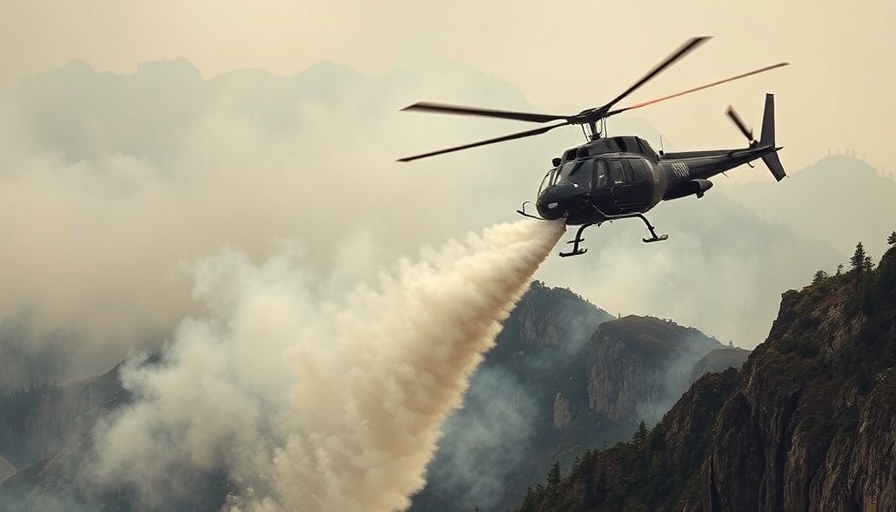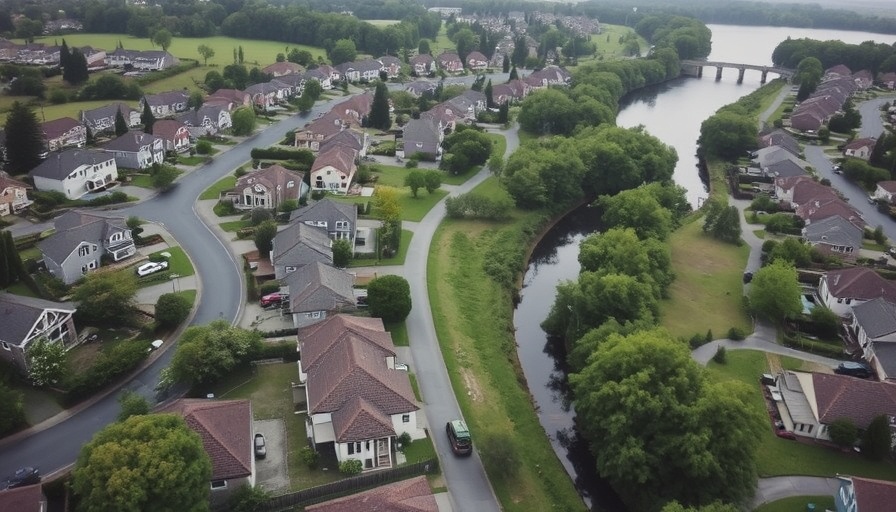
South Korea's Battle Against Unprecedented Wildfires
As wildfires engulf significant portions of South Korea, the situation has escalated into a humanitarian disaster. The death toll has tragically risen to 26, with over 37,000 residents evacuated from their homes. The nation confronts its worst-ever wildfires, igniting concerns over public safety, environmental impact, and emergency response efficiency. With reports indicating that human error is a significant factor in the outbreak, authorities are under pressure to address both immediate firefighting efforts and long-term preventative measures.
The Current Crisis: Numbers You Should Know
According to the government’s disaster response center, the wildfires have already scorched an astonishing 36,010 hectares (approximately 88,980 acres) of forest land. This figure marks a sobering statistic for the country, representing the most extensive wildfires South Korea has experienced. Among the deceased are not only four firefighters but also a pilot who lost his life when his helicopter crashed while engaged in firefighting efforts. Unfortunately, many of those perishing are elderly individuals, primarily in their 60s and 70s, raising alarms over vulnerable populations caught in the jaws of this natural calamity.
Human Error and Its Consequences
Authorities suspect that several blazes were ignited due to human actions, either while clearing grass from family tombs or accidental sparks from welding activities. Such issues underscore the urgent need for public awareness and education on fire safety protocols, especially during dry seasons. Observers express concern about the potential for similar emergencies becoming commonplace if preventive measures are not adopted.
Emergency Response: Testing The Nation's Resilience
In response to the wildfires, more than 9,000 emergency personnel and 120 helicopters have been mobilized across the affected regions. Acting President Han Duck-soo stated in a recent address, “Damages are snowballing,” revealing how overwhelmed the response efforts have become. The mobilization of resources represents a concerted effort by government agencies to contain the fires, but the challenges remain daunting due to strong winds that complicate aerial firefighting efforts significantly.
Community Impact: Who Will Rebuild?
More than 325 structures have been lost, and the long-term repercussions of such damage will impact communities for years to come. Many residents now face uncertainty as they navigate the complex process of recovery. Local authorities are calling for support and resources to assist those displaced and to ensure that rebuilding initiatives are prioritized once the immediate emergencies are resolved. The region's economic stability and cultural heritage are at risk, highlighting the need for both localized and national responses to recovery efforts.
Future Predictions: Preparing for the Next Crisis
Experts urge that proactive strategies be adopted as South Korea reevaluates its approach to wildfire management and prevention. This includes improving regulations around land use, enhancing training for firefighters, and increasing public awareness of fire hazards. Moving forward, it is imperative that communities foster resilience against natural disasters through better land management practices, potentially mitigating the effects of similar catastrophes in the future.
Call to Action: How You Can Help
The ongoing crisis in South Korea raises significant questions about public safety, emergency preparedness, and community resilience. Residents can contribute to recovery efforts by staying informed about fire safety protocols, supporting local charities aiding displaced families, and advocating for comprehensive wildfire management policies by their local representatives. Community engagement is essential in building a resilient future for those affected.
 Add Row
Add Row  Add
Add 






Write A Comment